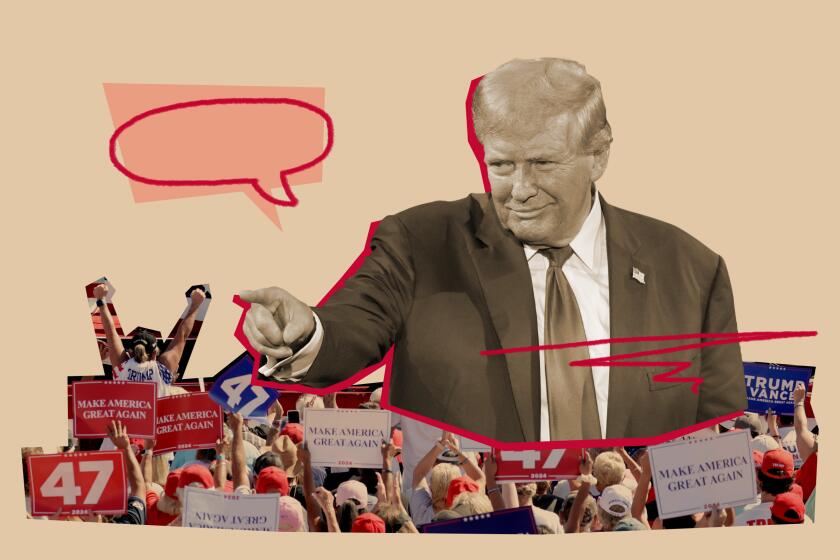Women in Politics
Americans who think it matters that there be more equitable representation of women in the political process could take heart last week in the numbers--and spirit--of women officeholders gathered in Coronado, Calif. There were 900 female leaders at the session for women in state legislatures; despite geographic and only occasional partisan differences, they were united on the need to elect still more women and they were busily sharing ideas on how to do it.
In Washington the number of women in elective office remains discouraging, with only two women of 100 members in the Senate and 23 of 435 members in the House of Representatives. That’s 4.7% of the total. Two of those 25 women are from California, Democratic Reps. Barbara Boxer of Greenbrae and Nancy Pelosi of San Francisco.
Statistics at the state level are still not much to write home about, but the numbers represent a fourfold improvement in less than 20 years. In 1969 there were 301 women in state legislatures; today there are 1,168, or 15.7% of total membership, according to the Center for the American Woman and Politics, which sponsored the conference. California ranks 30th nationally, with four women in the state Senate and 13 in the Assembly, or 14.2% of the total. Women hold 43 of the 295 top statewide elective offices in the country, including the governorships of Kentucky, Nebraska and Vermont.
The number of women elected to state office is increasing faster than the number elected to serve in Washington. That may be just as well since the women gathered in Coronado were convinced that most of the action is in their backyards now. State governments, they are convinced, take far more interest in people’s immediate concerns, whether that’s how well teachers are teaching, how much money should be spent to care for victims of acquired immune deficiency syndrome or whether government is setting adequate standards for child-care programs.
Their challenge is to translate the enormous potential female vote into real clout on these and other issues. In 1988 there will be 10 million more women of voting age than there are men. Women register and vote in greater percentages than men do, but the male politicians still don’t always relate the votes they receive in the election to the votes they make in office.
To try to change that situation, some of the women who attended the conference are exploring the question of what women of all economic backgrounds want to achieve through politics, especially women who most need government services. Preliminary conversations have shown that “what moved these women the most was their kids,” said Joanne Howes, a political consultant. To mobilize those who stand outside the process, women who are on the inside must show them how concrete change can occur in the lives of their children through political action, Howes added. Then they will see the connection between public policy and private lives.
It’s a tall order, but one that the women who went to Coronado headed home determined to fill.
More to Read
Get the L.A. Times Politics newsletter
Deeply reported insights into legislation, politics and policy from Sacramento, Washington and beyond. In your inbox three times per week.
You may occasionally receive promotional content from the Los Angeles Times.










